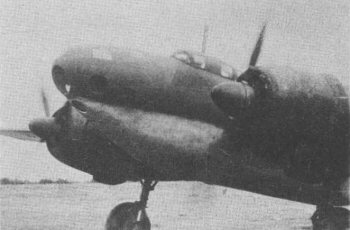Tachikawa Ki.74 ("Patsy"/"Pat")

.jpg)


.jpg)

The Ki-74 was first conceived in 1939 as a long-range reconnaissance aircraft to operate from Manchurian bases. Its development was shelved when further research was needed to design its pressurized cabin. Late in 1941 the project was revived as a long-range high-altitude bomber-reconnaissance aircraft capable of bombing the United States mainland. The war ended before the aircraft could be deployed in sufficient numbers. When the Ki-74 designation was first identified in a captured Japanese document, it was thought to apply to a fighter type and was coded with the boy's name "Pat". Later, proper translation of captured documents finally confirmed that the Ki-74 was actually being developed as a bomber type, the codename was feminized to become "Patsy". The gender change of the name was an embarrassment to TAIC (the Allied group in charge of the aircraft codenames), and was one of the very few code name changes late in the war.
Tachikawa Ki.74
Type: Experimental high-altitude long range recon-bomber
Service: Japanese Army Air Force (JAAF)
Crew: five
Armament: one 12.7mm Ho-103 machine gun
up to 2205 lb (1000 kg) bombs
Reference: Francillon: 244
Specifications:
Length: 57' 11" (17.65 m)
Height: 16' 9" (5.1 m)
Wingspan: 88' 7" (27 m)
Wing area: 860.8 sq. ft (80 sq. m)
Empty Weight: 22,481 lbs (10,200 kg)
Loaded Weight: 42,758 lbs (19,400 kg)
Propulsion:
No. of Engines: 2
Powerplant: Mitsubishi Ha-104 Ru radial
Horsepower: 2000 hp each
Performance:
Range: 4971 miles (8000 km)
Cruise Speed: 249 mph (400 km/hr) at 26,245 ft
Max Speed: 354 mph (570 km/hr) at 27,890 ft
Climb to/in: 26,245 ft (8000 m) in 17 min 0 sec
Ceiling: 39,370 ft (12,000 m)
Production: 16 prototype and pre-production Ki-74s total
Additional information on this aircraft can be
found at Wikipedia
HERE.
For a very nice scale color drawing of this aircraft, see
here.
Additional color schemes for this aircraft can be found here.
If you don't see the table of contents at the left of your screen, CLICK HERE to see the rest of this website!